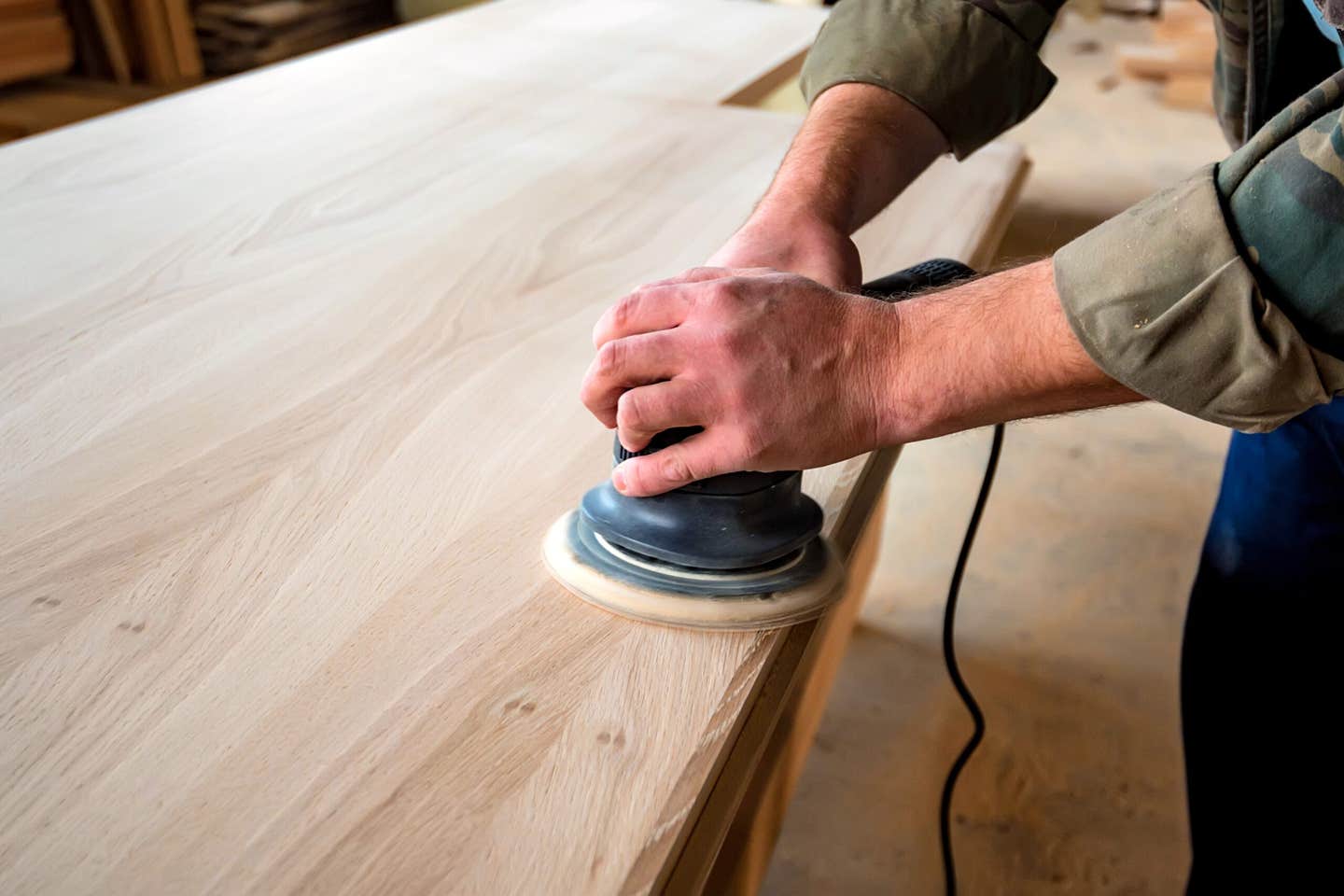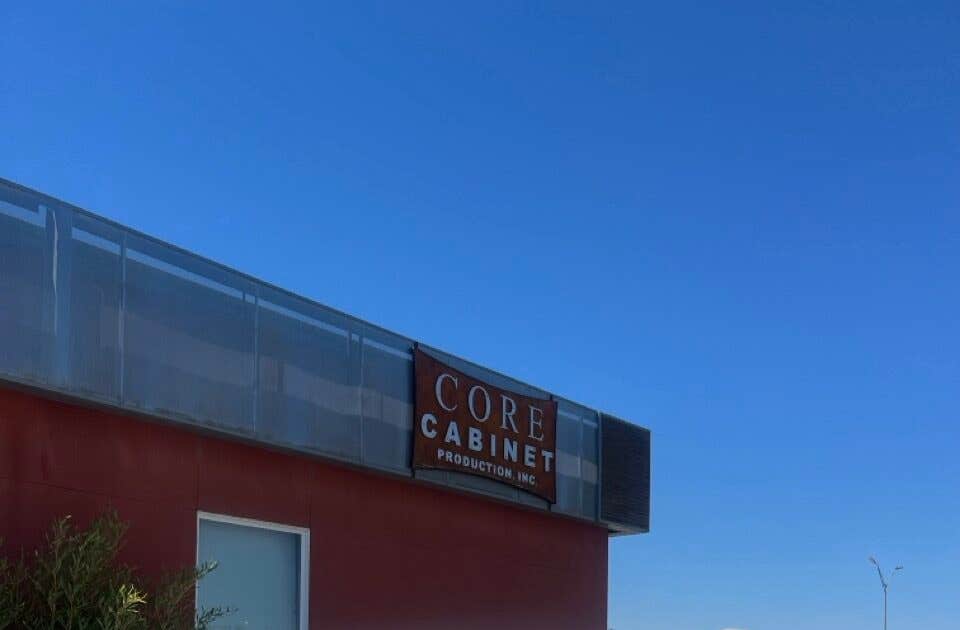A Full-Service Shop
Brogna Designs sets itself apart as a cabinet shop and remodeler in the greater Pittsburgh market
Lance Brogna, founder of Brogna Designs in Elizabeth, Pa., is inspired by clients happy with a job well done. The company provides full-service custom cabinetry and remodeling services for residential clients throughout its immediate region. By striving for efficiency, meeting demands, and focusing on excellence. the business is poised to build upon its 23-year legacy.
“There are challenges of trying to be efficient, plan the job, and have the materials there and ready to go so we’re not making extra trips, having our designs right so we’re not coming out with cabinets that don’t fit, and challenges of people and expectations being really high. Those are the drainers on life as a cabinet shop businessman,” says Brogna.
“The rewards, though, are when you take a house or kitchen that was subpar and leave it with something that’s going on a website or in a magazine and people are raving about it, that’s the motivation to keep at it, the return on investment of effort, when it pays off and people are happy and satisfied with what you did. That’s the food that keeps you going on and going on.”
Brogna and his full-time crew make a team of 10, with additional help hired as needed. Aside from turnkey woodworking services, the company also functions as an interior general contractor offering demolition, plumbing, electric, flooring, countertops and more, giving it a leg up on the competition.
“There are other shops that do what we do, but there aren’t many that do the full remodeling without involving subcontractors,” says Brogna.
“There are big kitchen dealers here who do what we do in terms of size and detail, but most of them are using manufactured cabinets that they supplement maybe with a little bit of custom. They don’t have much of a shop, and they’re probably not doing the remodeling aspect of it.”
A neighborhood shop
Most jobs are generated through referrals, with the exception of several contractors and architects that use the shop routinely. All work is local.
“We travel about an hour or [within] a 30- to 40-mile radius from where we are in Pittsburgh. That doesn’t turn into a whole lot of miles because it’s hard to get around Pittsburgh. We’re don’t do any long-distance work or build and ship. There’s so much back and forth for one job.”
Large projects are mostly kitchens and baths, while smaller projects include bars, built-in bookcases and wall units, fireplace surrounds, and some furniture. Rarely does the company work on new home construction.
“Pittsburgh is an older housing market, so there’s plenty of work here. There are a lot of areas that are almost historic, that have older homes and need bigger spaces. A couple of architects we work with, they will build an addition off the back and the kitchen always goes into the addition. The Mount Lebanon area of Pittsburgh is one of those areas. We do a lot of work there,” says Brogna.
“We’ll do anything for in the house, but if we had to pick a profit point it would be kitchens. In my experience, people are willing to pay a little more for kitchens, just because it’s adding to the perceived value of the overall house versus a wall unit.”
Switching careers
Originally from the Wilkes-Barre/Scranton area of northeastern Pennsylvania, Brogna moved to Pittsburgh while working for Westinghouse as an engineer. There, he continued with his lifelong hobby of woodworking until making a big career change.
“As a kid I built model railroads and things. I always got tools for Christmas. When other kids got G.I. Joes, I got a jig saw or something. So, I’ve always been the kind of guy who wanted to build things and the engineering world was really cool, but I was too far removed from the end product to get a sense of accomplishment out of it. There was a lot of documentation, letter writing, and that sort of thing so I wanted to get more into hands-on.”
He tinkered with side work for several years, and when a friend asked for a kitchen, he decided to quit his full-time job and hang a shingle in 1999. His home shop arrangement worked well before space and aesthetics became an issue.
“I worked out of my garage shop until 2004 when I got a big job that required cabinets for the whole house. We were working with a designer, and she said she’d like to bring the architect out to my showroom, and I thought, ‘my gosh, my showroom’s my kitchen table’. So, we tried all these things to not have them come out.
“At that time, I had two employees. We were building these nice cabinets and we had nice results, but we didn’t want anyone to see what we were doing. When that job was done, I said we’ve got to build a shop, we have to be professional. So, we built this shop in 2005.”
The shop sits on a hill in a semi-industrial area. It’s approximately 5,000 sq. ft. with a 500-sq.-ft. showroom.
“We never wanted to have a showroom that was huge with full kitchen displays. We didn’t want to waste our space on that. We wanted most of our space for manufacturing. So, we set up our showroom with samples and as a meeting place,” he says.
“It forces us to be efficient. If we had more space, we’d just have more stuff. We do what we have to do, and it forces us to design it, build it, get it done and get it out of here.”
Bigger isn’t better
The office is staffed by a designer/draftsman, project manager, and Brogna, who works on sales and accounting. The shop features three craftsmen, including a foreman and two assistants, and a full-time finisher. The other full-time employees remain in the field for installs and remodeling.
Brogna has looked into CNC equipment and says it’s a possibility, if he finds himself with a lack of skilled help. But he doesn’t sound like a fan.
“I don’t want to become slave to the equipment. By buying a [six-figure] piece of equipment, we’d become a slave to the equipment. We’d have to keep it fed and producing things and I think that would take the joy out of the hands-on production that keeps the guys motivated.”
Brogna is content with the current workflow and backlog. He plans to keep things operating as is for the time being.
“We do about $1.2 million a year as our overall revenue. That’s been pretty steady for the last couple of years. My first year we did a couple hundred thousand, so it’s ramped up from that over the course of 20 or so years.
“I would say the $1 million to $1.5 million range is probably where we will sit based on the volume we can put through here. If we go beyond that we’d have to hire more people and get more space, and I’m not sure our bottom line would be much different. What we found in real busy times is when you push more through you get more inefficient, you make more mistakes, there’s more rework, there’s more bounce in between several jobs, and you spin your wheels.”
Other than doing a few commercial jobs at the height of the pandemic, Brogna has no desire to deviate from remodeling homes and keeping a relatively small crew. In line with the adage ‘if it’s not broke, don’t fix it’, he stands firm in not succumbing to outside pressure for change.
“The business world says bigger is better. The business world will always say you’ve got to get bigger; you have to grow, you have to do more. If you fall prey to that, I think you lose sight of what the real point of business is – the bottom line. What’s you profit out of it. That’s more of our driver than being the biggest cabinetmaker.”
For more, visit brognadesigns.com.
This article was originally published in the June 2022 issue.







